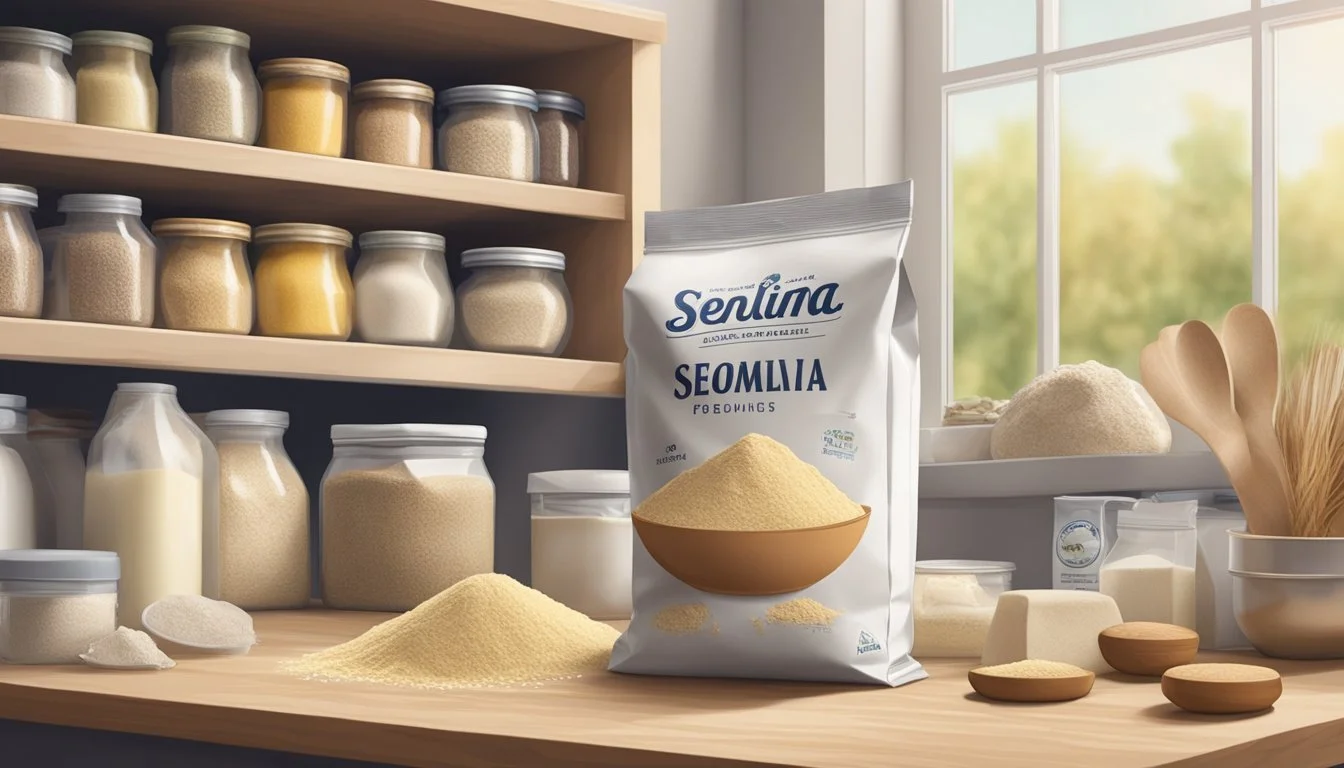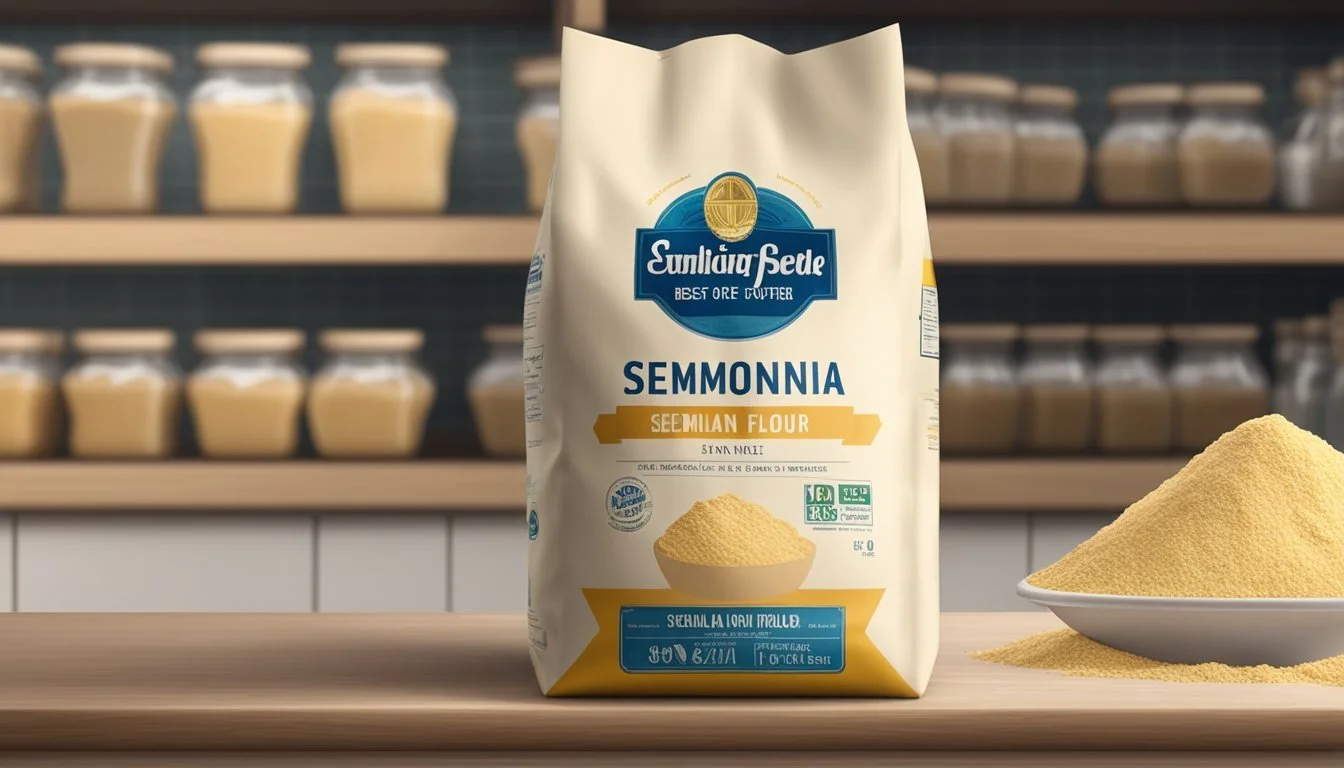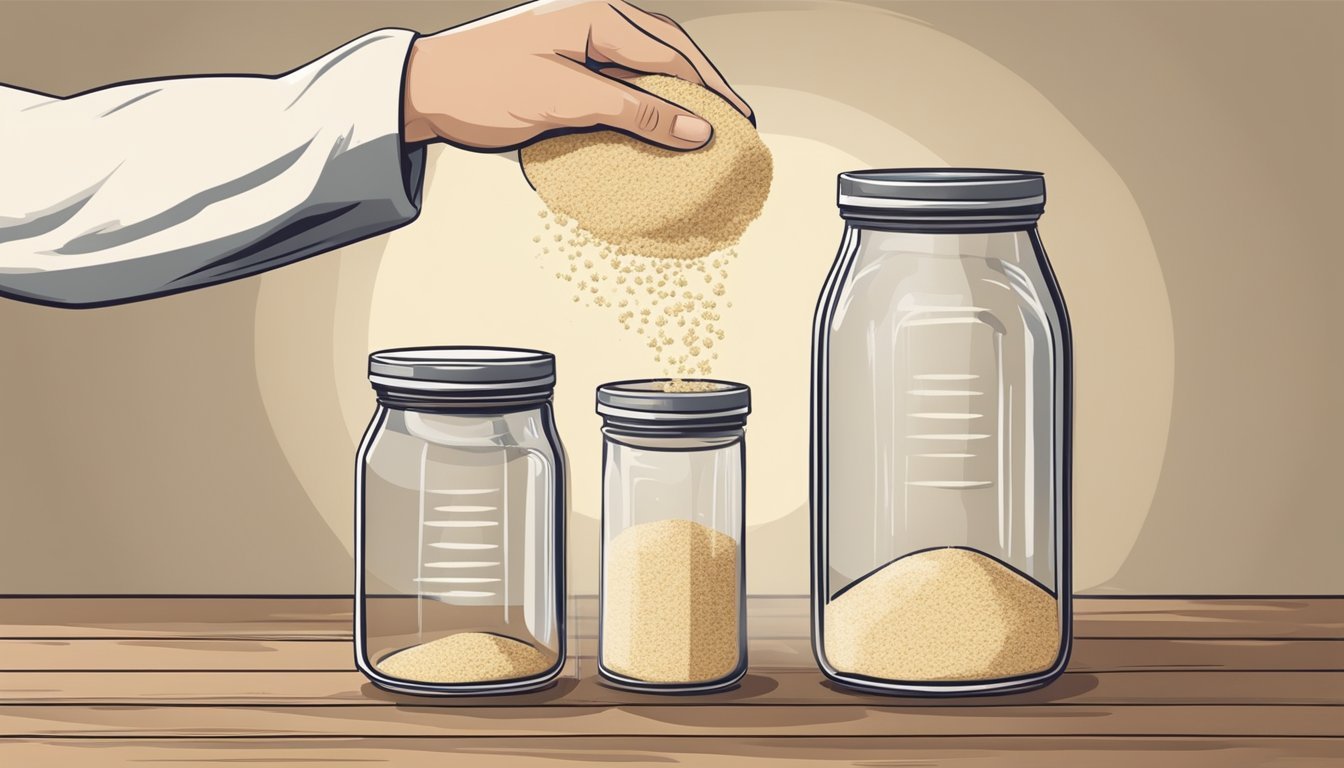How Long Does Semolina Flour Last?
Understanding Its Shelf Life and Storage
Semolina flour is derived from durum wheat, known for its high protein and gluten content, making it the preferred choice for pasta and some breads (how long does bread last?). With proper storage conditions, semolina flour has a considerable shelf life, typically ranging between 1 to 2 years. It maintains its quality best when stored in a cool, dry area away from sources of moisture, heat, and light, which can adversely affect its lifespan.
Manufacturers often provide a "best by" date to indicate peak quality, but this type of flour can remain usable beyond this timeframe if no signs of spoilage are evident. Consumers can expect semolina flour to retain its freshness for several months when kept in an airtight container, shielding it from environmental variables that could hasten spoilage.
To determine if semolina flour is still good to use, one should look for changes in color, texture, or smell. A sour or off odor is a clear sign that the flour should be discarded. Ensuring that semolina flour stays dry and is handled with clean utensils can further protect it from contamination and preserve its quality for the enjoyment of homemade pasta, bread, and other culinary creations.
Understanding Semolina Flour
Semolina flour is known for its high protein content and rich yellow color, used primarily for pasta and bread making.
Source and Composition
Semolina is derived from durum wheat, specifically from the endosperm of the grain. Durum semolina is high in protein and gluten, which contributes to its robust texture and structure when used in cooking and baking. The nutritional profile of semolina includes a good amount of iron, vitamins, and minerals such as folate, making it a nutritious choice among different types of flour.
Characteristics of Semolina Flour
Semolina flour is recognized for its coarse texture and distinct yellow color. The flour consists of granules that are larger than typical white flour, owing to the milling process which removes the bran and germ. The high gluten content in semolina gives it a strong and flexible structure, ideal for the dough that requires resilience, like pasta. In terms of flavor, semolina is mildly earthy and sweet.
Comparing Semolina with Other Flours
Compared to all-purpose flour, semolina is coarser in texture and higher in gluten, which makes it the preferred choice for pasta and some types of bread. In contrast, whole wheat flour (how long does whole wheat flour last?) includes the bran and germ, providing more fiber but a different texture. Semolina's high protein content and unique properties differentiate it from other flours, making it a special ingredient in many culinary applications.
Storage and Shelf Life
Maintaining the freshness and extending the shelf life of semolina flour depends on proper storage conditions, knowledge of its expected longevity, awareness of signs of spoilage, and adherence to safety measures to mitigate health risks.
Optimal Storage Conditions
Semolina flour retains its quality best when stored in a cool, dry place such as a pantry or cupboard, away from sources of heat and light which can degrade the flour over time. It is advised to transfer semolina flour to an airtight container to protect it from humidity and air, both of which can hasten spoilage.
Expected Shelf Life
When stored properly in the recommended conditions, semolina flour generally has a shelf life of 1-2 years; however, it is still crucial to check the expiration date on the packaging, as this can vary by brand. Storing it in the freezer can extend its usability beyond this period.
Signs of Spoilage
Semolina flour can go bad, and indicators of spoilage include an off smell, discoloration, and mold growth. An unpleasant odor or changes in appearance signal that the flour should no longer be used for baking or cooking.
Safety Precautions and Health Risks
Consuming spoiled semolina flour can pose health risks, such as food poisoning or anemia, due to the presence of mycotoxins produced by mold. Therefore, it is essential to handle semolina flour with care, keeping it away from direct contact with sources of moisture and heat to prevent the oils in the flour from turning rancid.
Using Semolina Flour
Semolina flour, derived from durum wheat, is prized for its robust flavor and slightly coarse texture, making it an excellent choice for a diverse range of dishes, from breads to desserts.
In Baking and Cooking
Semolina is often the flour of choice for artisan breads and pizza dough due to its high gluten content, which provides a chewy texture and structural integrity. In baking, it imparts a golden hue to the crust of bread and pizzas that is both aesthetically appealing and rich in taste. When used in combination with all-purpose flour, it can enhance the texture and flavor profile of baked goods, offering a depth that is particularly desirable in hearth breads and European-styled loaves.
Popular Recipes and Preparations
Pasta: Semolina's durability and elastic quality make it ideal for making pasta dough, leading to a firm and satisfying texture in the finished product.
Couscous (What wine goes well with couscous?): In couscous preparation, semolina flour is a key ingredient, giving the dish its distinctive granule size and ability to absorb flavors.
Additionally, semolina is used in various desserts, such as semolina cake, where its grainy texture provides a unique mouthfeel. Groceries and specialty stores usually stock semolina flour in their baking aisle, often alongside other specialty grains.
Substitutes and Alternatives
While semolina flour has a specific role in many recipes, substitutes can be used depending on the desired outcome:
All-purpose flour can replace semolina in baking, although the end result will have a different texture and flavor.
Cornmeal is a gluten-free alternative for recipes that call for the coarse texture of semolina, such as the dusting of pizza stones and bread pans.
These alternatives, though suitable in some cases, may not fully replicate the chewy texture or the rich, nutty flavor semolina flour imparts to traditional dishes like pasta or bread.
Preservation Techniques
The longevity of semolina flour hinges on appropriate storage and packaging. Ensuring that it is correctly sealed and the environment is controlled can extend its shelf life significantly.
Sealing and Packaging
One must transfer semolina flour from its original packaging to an airtight container. This barrier limits exposure to moisture, air, and pests, which are primary contributors to spoilage. If the flour was purchased in bulk or the original package has been compromised, resealable plastic bags can serve as an effective alternative.
Step-by-step process:
Transfer semolina flour to an airtight container.
If using a bag, remove as much air as possible before sealing.
Label the container with the current date to track the storage time.
Extending Semolina Flour's Shelf Life
To maximize the shelf life of semolina flour, one should store it in a cool, dry place, away from sources of heat and direct sunlight. The area should maintain a consistent temperature to prevent the flour from absorbing moisture which can lead to clumping or spoilage.
Best practices:
Place the airtight container in a pantry or cupboard away from appliances.
Avoid areas prone to temperature fluctuations, such as near an oven or a window.
Buying and Storing Semolina Flour
When purchasing semolina flour, one should focus on quality and shelf life. Storing it correctly at home is crucial to retain its nutritional value and appearance.
Selecting High-Quality Semolina Flour
When visiting grocery stores to buy semolina flour, consumers should look for a fine, golden-textured flour with a hard feel, which indicates high protein content and freshness. Additionally, checking the packaging for a "best by" or "use by" date can give an indication of the flour's remaining shelf life. One must ensure that the package is sealed properly to prevent contamination.
Storing Semolina Flour at Home
Storage Container:
Use an airtight container to prevent moisture and pests.
A clear container can be beneficial to monitor the flour's appearance without opening it.
Location:
Store the container in a cool, dry place, such as a pantry.
Avoid areas with direct sunlight or high temperatures to maintain the flour's quality.
Shelf Life:
Under optimal conditions, semolina flour can last 6 months to 1 year after opening.
Sealed flour often remains good for around 1 year past the date on the package.
By adhering to these storage methods, semolina flour's nutritional value, consistency, and quality can be preserved for use in a variety of recipes.






